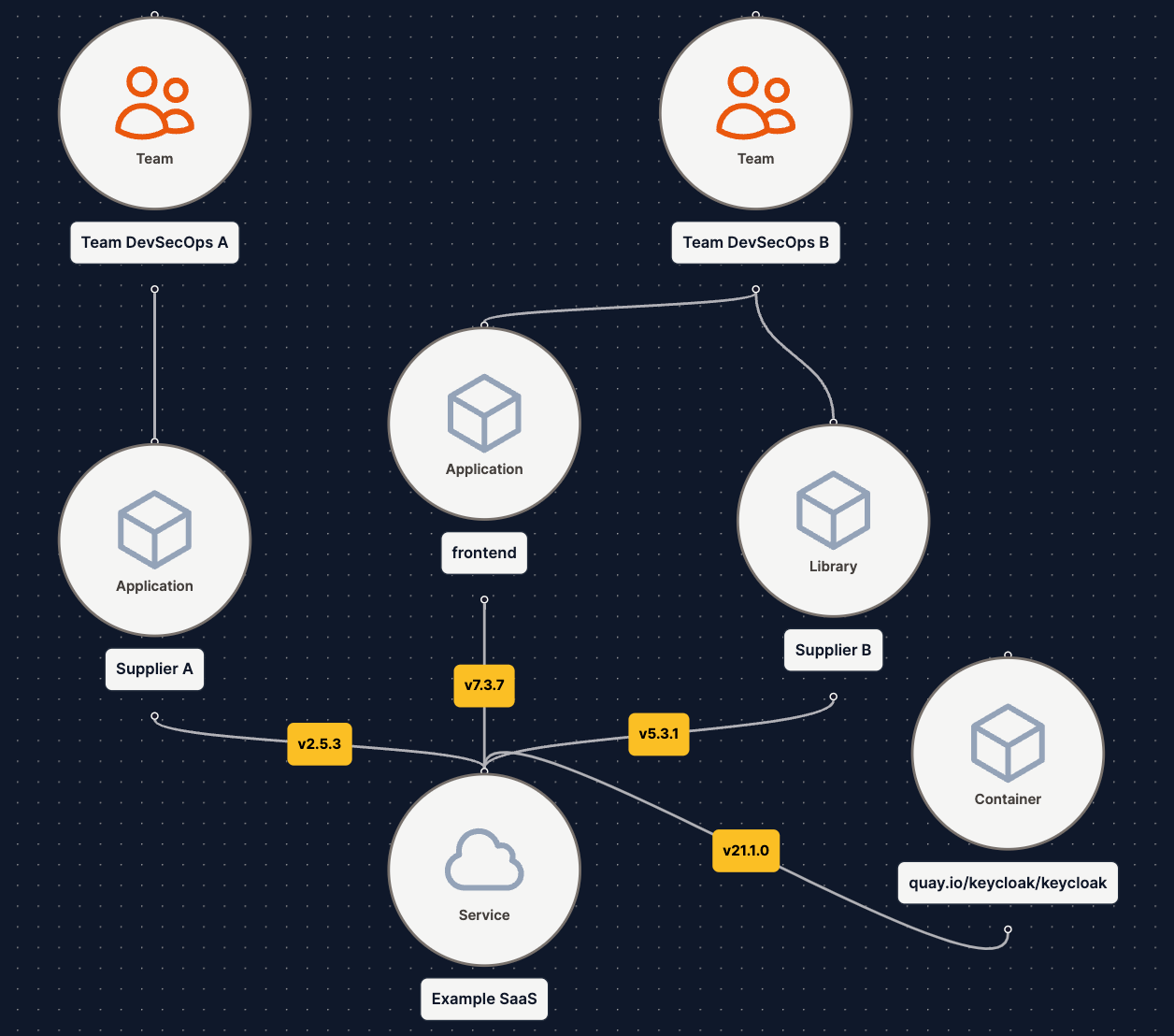Use-Case: Achieving Supplier Transparency through SBOMs
In today’s software-centric world, enterprises are increasingly reliant on a multitude of vendors for their software needs. This interdependence has heightened the need for transparency, especially in terms of understanding the components and vulnerabilities embedded within the software supplied. Software Bill of Materials (SBOMs) are emerging as a crucial tool in this context, ensuring comprehensive visibility and control over software components.
Looking for a hands-on guide?
Check out our guide Implementing Supplier Transparency.
This guide provides a structured approach, aligning with the needs of enterprise-level operations and compliance requirements.
The Shift Toward Supplier Transparency
1. Diverse and Complex Software Ecosystems
- Enterprises integrate software from a variety of vendors, resulting in a complex web of dependencies and potential vulnerabilities.
- Managing internal and external SBOMs in different formats can be challenging but is crucial for maintaining a secure software environment.
2. Regulatory Drivers
- New regulations are increasingly mandating transparency in software supply chains, necessitating the provision of SBOMs by vendors.
- Being proactive in adopting SBOM practices ensures compliance and prepares enterprises for future regulatory requirements.
Benefits of SBOMs from Vendors
- Independence from Vendor Communication: With SBOMs, enterprises are not solely reliant on vendors for information on components and vulnerabilities; they can proactively manage and assess risks themselves.
- Enhanced Vulnerability Management: SBOMs provide immediate visibility into the components used and their associated vulnerabilities, enabling quicker and more informed responses.
- Streamlined Compliance: Maintaining an inventory of all software components and their licenses through SBOMs simplifies the process of ensuring license compliance.
- Facilitates Risk Assessment: SBOMs empower enterprises to conduct their own risk assessments, evaluating the security implications of integrating third-party software.
Optimizing SBOM Management
Given the variety of SBOM formats and the sheer volume of data, effective management and integration of SBOMs is essential.
- Standardization: Adopting standard SBOM formats, such as CycloneDX or SPDX, can simplify the process of integrating and managing SBOMs from different sources.
- Automation: Implementing tools that automate the ingestion and analysis of SBOMs can significantly reduce the complexity and workload associated with SBOM management.
- Continuous Monitoring: Establishing practices for continuous monitoring of SBOMs ensures that any new vulnerabilities or changes are promptly identified and addressed.
The move towards supplier transparency and the adoption of SBOMs is a significant step forward in securing the software supply chain. It shifts the power dynamics, enabling enterprises to take charge of their own software security and compliance. By proactively managing SBOMs and leveraging the right tools and practices, organizations can ensure that they are well-prepared to navigate the complexities of today’s software ecosystems, ensuring security, compliance, and operational resilience.
Hands-on: Effective Management of Supplier Transparency
Step-by-Step Guide
SBOM Observer offers powerful capabilities for managing supplier transparency, essential for adhering to regulatory compliance requirements.
For practical steps on implementing these processes within your organization, refer to our guide: Implementing Supplier Transparency.
